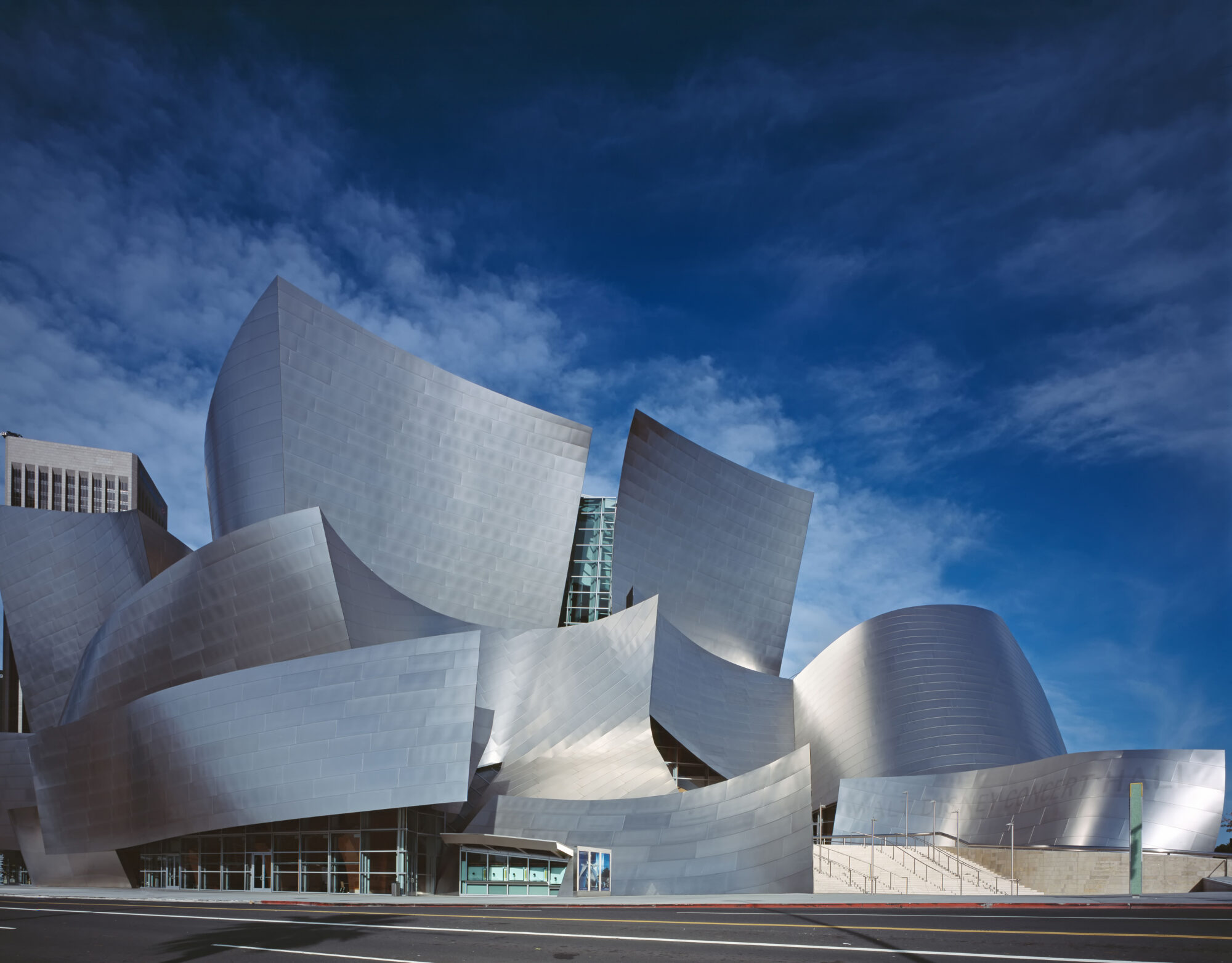
Walt Disney Concert Hall by Frank Gehry – from Wikipedia
Deconstructivism is a Post-Modernist architectural movement that appeared in the 1980’s. It was primarily characterized by breaking down the barriers of traditional architectural conventions. It abandons symmetry, continuity, order, and harmony. This was a philosophical reaction to the idea that “form follows function” from Modernist architecture. In this way, denconstructivist architecture took the form of controlled chaos, with disjointed and non-uniform shapes.

Denver Art Museum – from Snaptrude
This aesthetic also took inspiration from the artistic movements of expressionism and cubism. It aimed to convey a playful rejection of the functional, stripped structures of the modern era by adding in new, unconventional geometries, and blocky, jutting, cubist structures. In this way it runs against the city skylines and traditional homes of our culture.
The idea of deconstructivism was brought into the public eye in 1982 in the Parc de la Villette architectural design competition, from an entry by Jacques Derrida and Peter Eisenman, and Bernard Tschumi. Throughout the rest of the 80’s, architectural competitions and displays further popularized the style. However, at the turn of the decade, many architects distanced themselves from the style, making it rather rare in public buildings.

Louis Vuitton -from Arch Daily
Although the deconstructivist phase did not last long, it signified a rejection of cultural norms, “breaking down” the accepted way of life to provide something new, exciting, and eye-catching. It is an architectural representation of anti-establishment cultural movements of the 70’s, that eventually became mainstream in other art forms, such as fashion. This led to the deconstruction movement of ripped shirts and jeans and reorganized articles of clothing to make bizarre, different, and now mainstream trends.

Photo – from Not Just a Label
The deconstruction fashion movement greatly paralleled the deconstructivist movement of the architectural world. It emphasized asymmetry and exposed the seams, ridges, and edges of fabric to show a rejection of prim, pristine, and collected clothing.

Photo – from Fashion Network UK
Many designers contributed to this movement, but some notable ones were Ann DeMuelmeester and Martin Margiela, two Belgian fashion designers, both of whom used this aesthetic to challenge convention. They did this by using avant-garde approaches with asymmetry, unconventional materials, and exposed seams.

Walmart – Women’s Baggy Ripped Jeans
The most modern form of the deconstructive design styles is the widespread trend of ripped jeans. It embraces the asymmetrical aesthetic, as well as ridged seams. It fully embodies the deconstructed aesthetic with the unbalanced rips throughout the pant legs, truly deconstructing the article of clothing.
Both of these styles show that designers showed a frustration with modern conventions. These aesthetics show artists breaking free from the constraints of modern design rules, and proving that rules are not needed to create beautiful art.
Information gathered from: Wikipedia, Snaptrude, Arch Daily, and Open AI strictly for gathering information.


4 Comments. Leave new
I am deeply inspired by the architecture of the buildings in your post. The unique curves of the Walt Disney Concert hall are stunning and immediately caught my attention. It is also interesting to see how much of an impact it had on clothing. I did not know that ripped jeans were part of this aesthetic. It might be interesting to see if aspects of this aesthetic exist outside of buildings and clothing.
Hello Kyle!
Thank you for the input! This aesthetic can be found in genres through all of art and history. It is characterized by a systematic rejection of conventional rules assigned to a genre. Although it may not go by the same name, the theme of standing out against the norm in wild and deconstructed ways is seen everywhere.
I was initially drawn to this blog post because of the cover image of the Walt Disney Concert Hall–I have a friend studying architecture and they were obsessed with that building in high school. I learned a lot from the rest of the post as well! I always knew the Denver Art Museum looked funky but now I know the architecture aesthetic that it falls under.
As for the logistics of posting, WordPress allows you to add captions to the images rather than just having them in the regular body of text. I found that pretty helpful in making my post. Just FYI if you weren’t aware!
Hey Katie!
Thank you for the advice on the photo captions – I’ll use that in my next post.
I learned a lot in this exploration too! The Walt Disney Concert Hall is what drew me to the aesthetic as well, and it was cool to see the connection between the architecture and fashion industries with the correlated genres!